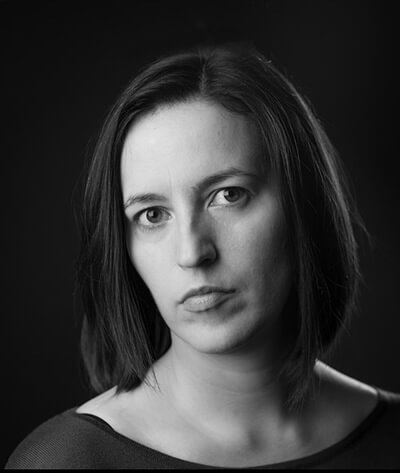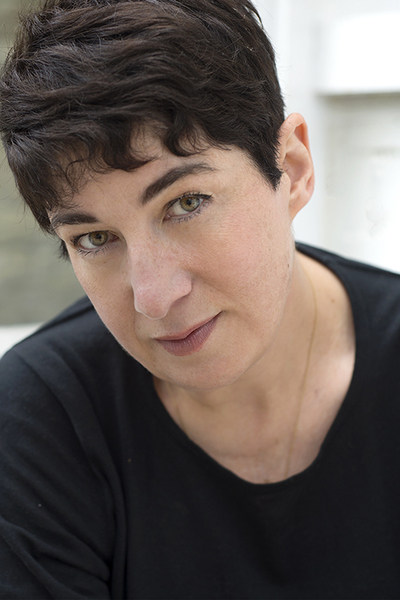Elizabeth Fremantle’s historical thriller The Poison Bed fictionalizes the story of King James’s favorite, Robert Carr, and the poisoning scandal in which he became embroiled. The term “favorite” could mean anything from a close friendship to an intimate sexual relationship, and as The Poison Bed dances back and forth between Robert’s rise to power and his imprisonment in the Tower of London along with his wife, the beguiling Frances Howard, the author explores the complicated, murky ways in which homoerotic desires and relationships were expressed in early modern England. Here, Fremantle discusses the difficulty of defining a historical figure’s sexuality, and what that meant for her characterization of James and Robert.
Rubens’ glorious ceiling in the Whitehall Banqueting House, one of the great artistic legacies of the Stuart era, depicts the heaven-bound figure of King James I surrounded by the flickering wings and dimpled flesh of a host of cherubs. Not long ago, I sat beneath it in the company of several towering drag queens trussed into a corsets, heels, bum-rolls and a good deal of flesh-toned hosiery, while one announced in a booming voice, “Yes, darlings—our new king is a bit of a queen!” The evening was a gender-bending performance, part of the Historic Royal Palaces LGBT events program, telling the story of James I and his male favorites.
The gay community has long claimed James I as their royal poster boy, and why not? He was, after all, well known for having had a series of beautiful male favorites, including one whose heart he kept in a box after his death. Given there was no term for homosexuality at the time (only the illegal practice of sodomy), we cannot judge James’s behavior by the standards of today. And it is important to remember that when it comes to the private behaviors of kings, much evidence is based on little more than slander and supposition.
We do know, however, that James was not thought to have had any liaisons with women prior to his marriage. Indeed, it was rumoured that his close relationship at an early age with an older male cousin, Esmé Stuart, was a physical one, and Stuart was forced to leave Scotland because his influence over the young king was becoming problematic. To add to this, once there was an heir, a spare and a daughter all in good health, James chose to live separately from his wife from 1607 onwards. While this in itself was unremarkable, it was unusual in that he didn’t subsequently take a mistress, as was expected behaviour for a king at the time. James certainly preferred the company of men and there is a good deal of anecdotal evidence suggesting he actively disliked women, although many deem his marriage to have been a happy one.
In my mind, some of the most compelling evidence to suggest James had deep and passionate feelings for the men in his life is the abundance of surviving letters between him and his favorites. These texts are strikingly intimate. Take this, for example, to George Villiers:
I desire only to live in this world for your sake, and that I had rather live banished in any part of the earth with you than live a sorrowful widow’s life without you. And so God bless you, my sweet child and wife, and grant that ye may ever be a comfort to your dear dad and husband.
James R.
Two men, close friends, who call each other husband and wife, offers little ambiguity from our modern perspective. We would assume them gay on that evidence alone. But, as many historians have pointed out, the language of friendship between men in early modern England tended to be uninhibited and overblown with terms like “love” thrown about liberally. Masculinity was differently defined at the time—one only has to consider the clothes men wore at the Stuart court: festoons of pearls and lace and pom-poms on their shoes the size of cabbages, none of which would seem out of place on the main stage of “RuPaul’s Drag Race.” So, the letters, though compelling, are not sufficient evidence to prove James’s sexual preference.
The recent discovery of a secret tunnel at Apethorpe House, one of James’s favorite residences, between his and George Villiers’s bedchambers caused a flurry of supposition. But this too has a plausible and mundane explanation. Corridors between bedchambers were commonplace in palaces of the period. Privacy, as we recognise it, didn’t exist in such buildings, which were designed to house a court of hundreds. The bedchamber was as much a place for political activities as for sexual. Corridors such as this would have allowed access to the king’s close circle, including the Gentlemen of the Bedchamber, of which Villiers was one. All early modern kings had Gentlemen of the Bedchamber, young courtiers who had close access to the monarch and were required to sleep in his room on a rota, as a security measure.
The role of the historian is to seek evidence, making for a sticky problem when it comes to the intimate sexual practices of a monarch, when the only proof of sex was a bloody sheet or a pregnancy. The fact that James fathered children is irrefutable evidence that he had sexual relations with his wife. Beyond that we have only hearsay to go on. There was much contemporary gossip about James, whose pacifist policies with the old enemy Spain were deemed “feminine” as compared with those of his predecessor Elizabeth. Sir Walter Raleigh is said to have joked that, “King Elizabeth had been succeeded by ‘Queen James.’” This pointed more to James’s style of foreign policy, though we cannot discount the possibility that its subtext was aimed at the new King’s rumored sexual proclivities. After all, his preference for the company of beautiful men was no secret.
Three men held particularly significant roles in James’s life, both public and personal: the aforementioned Esmé Stuart, Duke of Lennox; George Villiers, Duke of Buckingham; and Robert Carr, Earl of Somerset. All were privileged in much the same way as a royal mistress, the latter two rising from obscurity to greatness by way of the king’s favor. It is a matter of historical record that courtiers schemed to place beautiful young men in the King’s path in the hope of creating some advantage out of it, in much the same way pretty daughters were dangled under Henry VIII’s nose. It was a weakness to exploit. Huge political capital could be gained to those in league with a royal favorite. James bestowed honours and promoted these men to the highest offices, giving them excessive political responsibilities and power, though they were not always suited for such roles.
In the case of Robert Carr, James’ goodwill was stretched almost to breaking point. Carr became mixed up in a poisoning plot, for which he and his wife were convicted, which forms the central plot of my novel The Poison Bed. There is reason to believe that James’ actions around the trial indicated his fear that Carr, were he to be condemned, might have revealed personal details about his private habits in his scaffold speech. One could suppose that James had something to hide.
I have read more than one indignant tirade directed against those who choose to accept James as homosexual, stating that to do so casts negative aspersions, or “outs” a man who is no longer able to speak for himself. This pre-supposes that to call someone homosexual is an insult and that to be homosexual, and in this I include bisexual, is degrading. This, I refuse to accept. I do however understand historians’ reluctance to take a firm stance on James’ sexuality. Stuart historian Dr. Samantha Smith is clear as to why:
“There is no denying that James I was fond of his favorites, who happened to be young men, but we cannot say for certain if this attraction resulted in sexual relations. There is no actual evidence to support such claims and the act of sodomy was in fact illegal and deemed a sin in 17th century England and James was a man who feared sin.”
The assumption that male homosexuality can be defined by penetration precludes other sexual practices between men that don’t involve sodomy. It was sodomy, specifically, that was the legal and religious infringement at the time. The law had nothing to say about most other intimate acts. It is possible to imagine, then, even considering his fear of sin, that James may have indulged in practices we might nowadays consider homosexual but not in the act of sodomy itself.
Seventeenth century historian Rebecca Rideal comes at the question from a subtly different angle, focusing on the romantic aspect of love. We know, she says, “he had romantic relationships with men which is evidenced by his correspondence. Whether this was sexual, we will never know, but it was romantic nonetheless.” It is clear she accepts the letters as proper proof of an intimacy that escaped the bounds of ordinary friendship, and I tend to agree with her.
For the purposes of telling the story of Robert Carr’s relationship to James in The Poison Bed, I have made the assumption of both men’s bisexuality. This may be audacious and certainly might put some noses out of joint. But fiction is the mode by which we can explore the liminal space between the lines of the historical record. It allows us to imagine what happened behind closed doors and weave a plausible version of the past from what we know and what we can never know.
 It’s Private Eye July at BookPage! All month long, we’re celebrating the sinister side of fiction with the year’s best mysteries and thrillers. Look for the Private Eye July magnifying glass for a daily dose of murder, espionage and all those creepy neighbors with even creepier secrets.
It’s Private Eye July at BookPage! All month long, we’re celebrating the sinister side of fiction with the year’s best mysteries and thrillers. Look for the Private Eye July magnifying glass for a daily dose of murder, espionage and all those creepy neighbors with even creepier secrets.

















 The Joy of Cooking by Irma S. Rombauer
The Joy of Cooking by Irma S. Rombauer Sauces: Classical and Contemporary Sauce Making by James Peterson
Sauces: Classical and Contemporary Sauce Making by James Peterson The Classic Pasta Cookbook by Giuliano Hazan
The Classic Pasta Cookbook by Giuliano Hazan Madhur Jaffrey’s Indian Cooking by Madhur Jaffrey
Madhur Jaffrey’s Indian Cooking by Madhur Jaffrey













